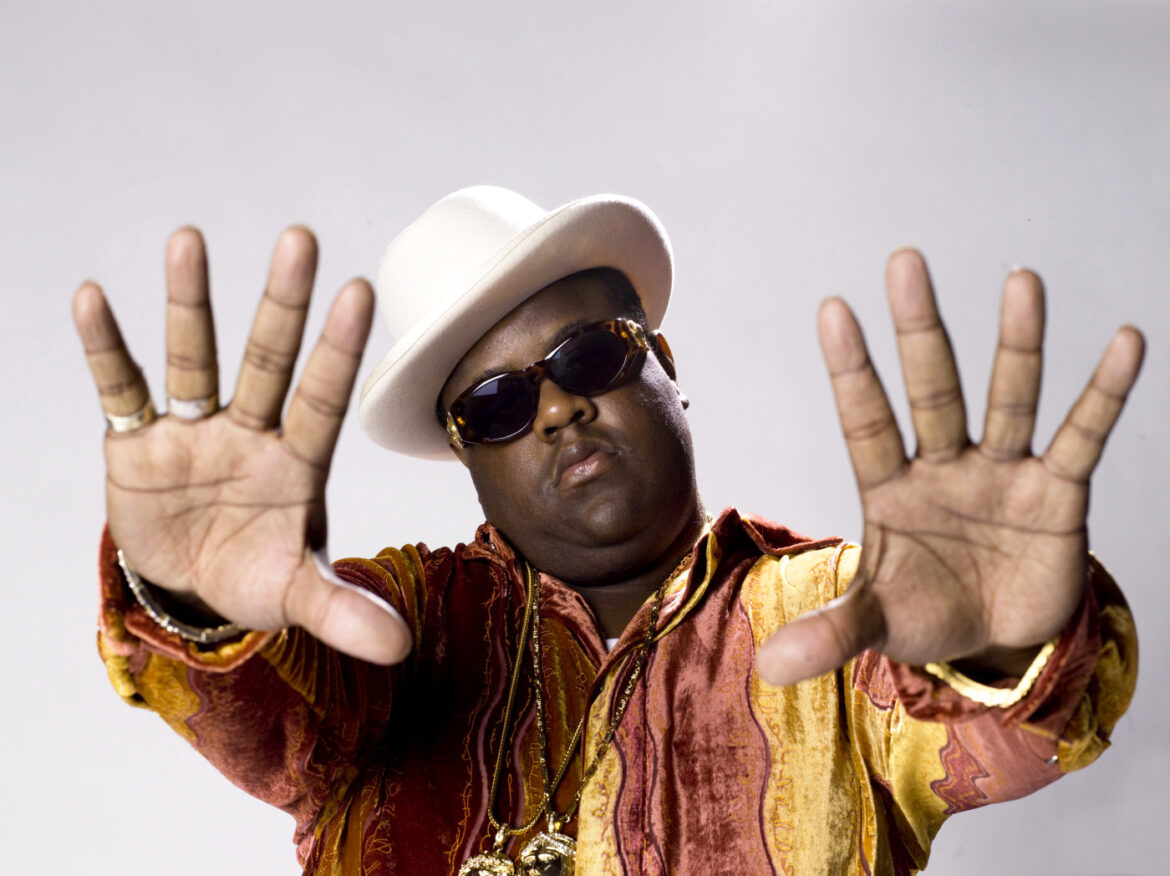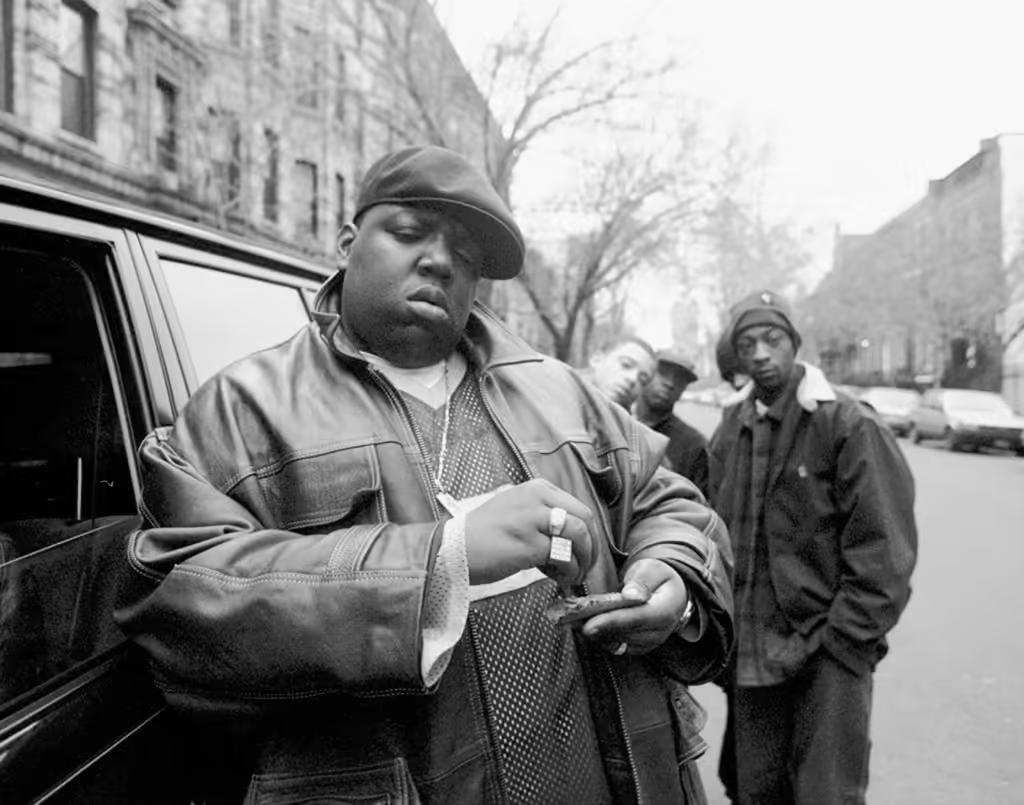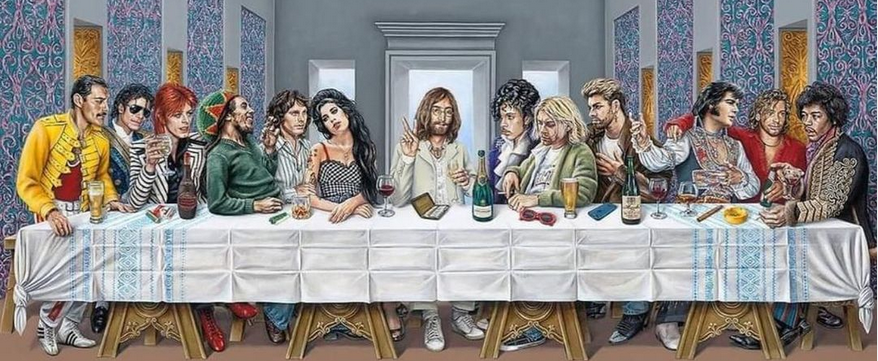
The Notorious B.I.G. or Biggie Smalls was born Christopher George Latore Wallace, and was an American rapper and cultural icon who left a profound impact on the hip-hop genre and music culture at large.
Born on May 21, 1972, in Brooklyn, New York, Wallace grew up in a rough environment that influenced the themes and tone of his music. His storytelling, lyrical prowess, and magnetic personality earned him recognition as one of the greatest rappers of all time. His life was tragically cut short on March 9, 1997, but his legacy has endured through the decades. As one of the seminal figures in East Coast hip hop, Biggie’s music is rooted in gangsta rap, offering a complex blend of harsh realism, celebration, and introspection.
Early Life and Roots in Brooklyn
Wallace was raised in the Bedford-Stuyvesant neighborhood of Brooklyn, a borough that would later be central to his identity as an artist. His mother, Voletta Wallace, was a Jamaican immigrant and single parent who worked hard to provide for him. Wallace’s father left when he was only two years old, leaving Voletta to raise him on her own. Despite her best efforts, Wallace became involved in criminal activity at a young age. As a teenager, he sold drugs and often found himself in trouble with the law, a lifestyle that became a significant part of his music and persona.
Growing up in the 1980s, Wallace was influenced by the burgeoning hip-hop scene in New York. He was drawn to the street culture and the expression of hip-hop as a way to communicate his own struggles and those of his community. His moniker, “Biggie Smalls,” came from his physical stature and his ability to command attention in any room. He was a large presence, both physically and personality-wise, and his distinctive baritone voice and effortless delivery made him stand out among other aspiring rappers.
Discovery and Rise to Fame
Biggie’s journey to fame began in the early 1990s when he recorded a demo tape that eventually reached the hands of Sean “Puff Daddy” Combs, then an A&R executive at Uptown Records. Combs recognized Wallace’s potential and soon signed him to his newly formed record label, Bad Boy Records. This partnership was pivotal, as Combs not only produced Biggie’s music but also crafted a distinct image for him that aligned with the Bad Boy brand. The label’s aesthetic blended the glamour of wealth with the grit of street life, creating a complex, appealing persona for Biggie.
In 1994, Biggie released his debut album, Ready to Die, a record that would cement his place in hip-hop history. The album was an immediate success, praised for its raw lyricism, innovative production, and vivid storytelling. Tracks like “Juicy,” “Big Poppa,” and “One More Chance” became instant hits and showcased Biggie’s versatility as an artist. Ready to Die told the story of a young man growing up in poverty, caught between the allure of wealth and the dangers of a life of crime. His lyrics, often semi-autobiographical, provided an unflinching look at the harsh realities of life in Brooklyn, resonating with listeners across the country.
.
.
Biggie’s success brought newfound prominence to East Coast hip hop at a time when West Coast rappers like Dr. Dre, Snoop Dogg, and Tupac Shakur dominated the charts. Ready to Die was seen as a revival for East Coast hip hop, with its gritty beats and hard-hitting lyrics offering a stark contrast to the smoother, funk-inspired sounds of the West Coast. Biggie’s lyrical prowess and storytelling ability were lauded, and he was quickly recognized as one of the leading voices of his generation.
The East Coast vs. West Coast Rivalry
The mid-1990s saw the rise of a bitter rivalry between the East Coast and West Coast hip-hop scenes, a feud fueled by media sensationalism and real-life tension. Biggie found himself at the center of this feud, especially in his relationship with Tupac Shakur, one of the most influential rappers on the West Coast. Initially friends, the two rappers fell out after Tupac was shot and robbed in New York in 1994. Tupac believed Biggie and Puff Daddy were somehow involved, an accusation they vehemently denied. This personal fallout evolved into a full-blown public feud, with Tupac releasing “Hit ‘Em Up,” a diss track aimed directly at Biggie and Bad Boy Records.
The rivalry between Biggie and Tupac symbolized the larger struggle between East and West Coast hip hop, with fans and media outlets often taking sides. Biggie’s music, as a result, became a part of the East Coast identity, representing the grittier, more streetwise sound of New York. Though Biggie largely avoided direct engagement with Tupac in his music, his position as a figurehead for East Coast hip hop made him an unwilling participant in a feud that would ultimately have tragic consequences for both artists.
Musical Style and Themes
Biggie‘s musical style was marked by his smooth, laid-back delivery, which contrasted with the intense and often dark subject matter of his lyrics. He had an uncanny ability to tell vivid stories through his lyrics, painting detailed portraits of life in Brooklyn. His songs often explored themes of poverty, violence, drug dealing, and survival, but they also celebrated success, pleasure, and indulgence. This duality made Biggie’s music resonate with a wide range of listeners. On the one hand, he was a street poet chronicling the struggles of life in the inner city; on the other, he was a larger-than-life character living out his dreams of wealth and fame.
Biggie’s ability to balance grim realities with moments of levity and self-celebration became a signature aspect of his work. In tracks like “Juicy,” he celebrates his rise to fame and the luxuries it brought, while also acknowledging his humble beginnings. “Everyday Struggle” and “Things Done Changed” explore the darker side of his life, touching on the violence and danger he faced growing up. Biggie’s lyrical genius lay in his ability to portray these contrasting elements authentically, making his music a nuanced reflection of the world he came from.
Death and Legacy
Tragically, Biggie’s life was cut short on March 9, 1997, when he was shot and killed in Los Angeles, California, at just 24 years old. His murder remains unsolved, shrouded in mystery and speculation, and it is often linked to the ongoing East Coast-West Coast rivalry, which was still simmering at the time. His death came just six months after Tupac Shakur was killed in a similar drive-by shooting, leading many to view Biggie’s murder as a tragic bookend to the feud that had consumed hip hop culture.
Shortly after his death, Biggie’s second album, Life After Death, was released posthumously. The album was a commercial success, debuting at No. 1 on the Billboard 200 chart and spawning hits like “Hypnotize” and “Mo Money Mo Problems.” The album further solidified Biggie’s status as a hip-hop legend, showcasing his versatility and his ability to innovate even within the genre’s conventions.
Over the years, Biggie’s legacy has only grown, and he is widely regarded as one of the greatest rappers of all time. His influence can be seen in the music of countless artists who followed him, from Jay-Z and Nas to contemporary rappers like Kendrick Lamar and J. Cole. His storytelling abilities, lyrical precision, and distinctive flow set a standard in hip hop that continues to inspire artists across generations.
.

.
Influence and Cultural Impact
Biggie’s impact extends beyond his music, as he has become a symbol of hip hop culture and a representation of the genre’s potential for storytelling and authenticity. His life and work have been the subject of numerous documentaries, books, and films, including the biopic Notorious, which chronicled his rise to fame and tragic end. Biggie’s image and lyrics have become cultural touchstones, immortalized in murals, fashion, and countless references in popular culture. The line “It was all a dream,” from his hit song “Juicy,” has become one of hip hop’s most iconic quotes, symbolizing both the hope and the struggle that characterize the genre.
Beyond music, Biggie’s legacy has influenced the world of fashion, with his iconic style—think Coogi sweaters, Versace sunglasses, and Kangol hats—becoming synonymous with 90s hip hop fashion. His look and persona exuded a sense of confidence and charisma that resonated with fans and set trends that remain influential in hip-hop fashion today.
The Enduring Legacy of Biggie Smalls
Biggie Smalls’ legacy endures not only because of his musical contributions but also because of what he represented: a young man from a disadvantaged background who used his talent to rise to fame and influence. His life story embodies the struggles and dreams of many, and his music continues to speak to the experiences of those facing similar challenges today. Biggie’s work remains relevant, and his storytelling ability set a new standard for lyricism in hip hop. He demonstrated that rap could be more than just braggadocio or celebration—it could be a powerful tool for social commentary and personal reflection.
As hip hop has evolved, Biggie’s influence has remained evident. His lyrical style, characterized by wit, wordplay, and introspective storytelling, has been emulated by numerous artists. His life and music serve as a reminder of the potential for art to transcend circumstances, bringing beauty and meaning to even the harshest realities.
In the two decades since his death, Biggie Smalls has become a cultural icon, a larger-than-life figure whose influence transcends music. His ability to capture the essence of his experiences and convey them with authenticity and skill has solidified his place in the pantheon of hip-hop greats. Though his life was tragically brief, his legacy lives on, inspiring new generations of artists and fans alike. Today, Christopher Wallace is remembered not only as The Notorious B.I.G., a groundbreaking rapper, but as a legend whose music, life, and story will never be forgotten.
Check out Biggie Smalls, The Notorious B.I.G., on Amazon.
.


Pingback: The Legacy of Fallen Hip-Hop Icons - Dead Musicians
Pingback: Chris Jasper died on February 23, 2025 - Dead Musicians